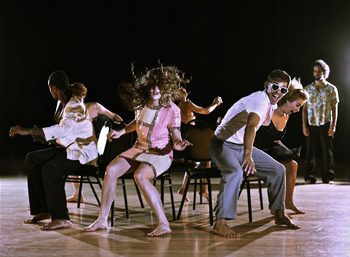Kudos to the North Carolina Symphony for their edgy programming of late. Using their widely-recognizable name, the orchestra has expanded beyond the tried-and-true pops and classical bifurcation; recent performances have included a “remix” of Schubert’s Death and the Maiden quartet, a Copland program curated by former executive director of the Brooklyn Philharmonic Joseph Horowitz, and the Soundbites series, begun in 2013. With the hiring of Will Robin, a UNC Ph.D. student who has written for The New Yorker and the New York Times, as their scholar in residence, the NCS is showing their commitment to pushing beyond the staid principles of traditional orchestra programming. The Soundbites program attempts to bring in a new audience, but not necessarily of a younger generation. Rather, the offer is simple: good food and good music.
Soundbites is a pairing of food and music at different restaurants in and around Raleigh. With one ticket comes a three-course meal and about an hour of music performed by musicians from the NCS. I am no food critic, but the combination of Humble Pie‘s cuisine and NCS musicians is irresistible. Humble Pie staff operated efficiently, serving a restaurant full of people within an hour. Personally, the culinary highlight was the rum raisin bread pudding, a wintry treat I look forward to every December. Plenty of vegetarian and gluten-free options ensured that the evening’s fare was open to most diners.
The music began after dessert was served and the talkative house quieted. Throughout the music’s beginning, ambient noise was filtered by the music: the scraping of forks against dessert plates, the low hum of an industrial dishwasher, patrons looking through coin purses in search of exact change. These sounds did not detract from the music but expanded the gustatory atmosphere: despite the filling meal, we were still hungry for music.
The short program opened with Johan Halvorsen’s Passacaglia modeled on Handel’s Suite No. 7 in G minor. Dovid Friedlander, violin, and Christopher Fischer, viola, performed the duet, expanding Handel’s ground bass. Halvorsen, a Norwegian violinist and younger contemporary of Edvard Grieg, was following the late 19th-century tradition of re-doing Baroque classics, a tradition evident from Brahms to Busoni in the early 20th-century. Friedlander and Fischer performed with a great sense of line and dynamics, at times passing 32nd notes back and forth with no break in the musical phrase. The musicians know the potential boredom of the same bass line over five minutes – so did Handel and Halvorsen, for that matter. With deft care they brought out the musical texture: only two instruments, but because of the abundant double stops, they sounded like four. Different textures, virtuosic arpeggios, and a closing accelerando accentuated the fun this music presents.
The program’s main feature was Mozart’s String Quintet No. 4 in G minor, K.516, a piece Friedlander introduced as operatic in mood. Although the five musicians – Friedlander and Christopher Fischer, plus Karen Strittmatter Galvin, violin, Carrie Fischer, viola, and David Meyer, cello – regularly perform together as members of the North Carolina Symphony, playing chamber music is a different experience. While they performed on this occasion with only a handful of rehearsals, they did not sound unpolished. Their recital, essentially a pickup performance, compared favorably with performances by professional touring chamber ensembles. The musicians did play with the operatic idea in mind: the viola duo frequently played accompanimental eighths, almost like a Greek chorus commenting on the main action, or an orchestra supporting the singer on stage. The odd beat three accents of the Menuetto sounded nearly Wagnerian, and the musicians clearly delighted in the dizzying, off-center trio. In the Adagio the ensemble added a sense of mystery to a fugal four-note subject, causing a sense of surprise every time it unfolded into a deceptive cadence. The work, typical of Mozart’s later music, infuses the drama of opera with an adventurous harmonic universe, often dwelling in the hinterlands of “classical” harmony. The dramatic pauses in the final movement, a Rondo, enveloped otherwise light music – a type of Ländler romp – with gravitas. The audience’s sustained applause clearly showed their appreciation for the rewarding musical effort.
NCS CEO Sandi MacDonald hosted the event.
The atmosphere of Soundbites recalls the burgeoning new classical music scene in New York, a scene centered not around Lincoln Center but at clubs like (Le) Poisson Rouge, not around symphonies but ensembles like hipster crossovers yMusic. We look forward to more as the NC Symphony continues to expand their market and their musical audience.











